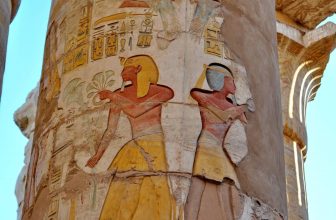One of Aswan’s most distinctive features. On the Nile’s West Bank, the magnificently picturesque Monastery of St. Simeon lies amid the sand dunes. It is one of Egypt’s largest and finest preserved Coptic monasteries, having been founded in the 7th century and abandoned in the 13th century owing to water problems.
The southern flank of the monastery is taken up by an aisled Basilica inside the monastic courtyard. The massive apse, with three rectangular niches beneath semi-domes, is located at the east end of the wide nave, which was formerly capped by two domes. The remnants of a fresco portraying Christ enthroned amid angels may be found in the center niche.
Various secondary buildings and tiny grottoes may be seen to the north and west of the church, while residential quarters can be found on the eastern side. Upstairs, the monk cells, with brick beds and Coptic and Arabic writings on the walls, are among the better-preserved barrel-vaulted living spaces.
Standing atop the defensive walls of the monastery and looking out over the undulating dunes gives you a sense of the monks’ solitude. You may hire a boat or felucca to transport you to the monastery boat landing today, and then trek or take a 30-minute camel ride across the dunes to get here.














